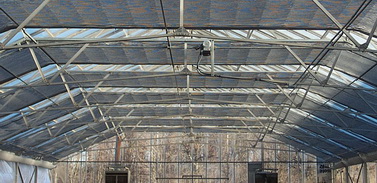

Efforts to create a dedicated international agreement are also hampered by the position taken by some ethics scholars and activists that enabling research into SRM, or even public discussion of it, represents a slippery slope which opens the door to its eventual use.

Thus, many questions regarding the acceptable deployment of SRM, or even its research and development, are currently unanswered. For now, there is no formal international framework designed to regulate SRM, with aspects of the UN Convention on Biological Diversity or the Vienna Convention for the Protection of the Ozone Layer coming the closest out of the existing agreements. Governing solar geoengineering is challenging for multiple reasons, including that few countries would likely be capable of doing it alone. Climate models often struggle to correctly estimate regional impacts of global dimming caused by historical sulfate air pollution, and so there is only low confidence in the current projections of how solar geoengineering would affect regional climate and ecosystems. For the same reason, simply using SRM to maintain present-day temperature would still alter the climate to some extent. However, they concur that is impossible for SRM to fully reverse climate change and return the world to its preindustrial state, because the scale of any intervention required to completely offset the recent warming would substantially alter the weather patterns and the water cycle compared to the past, while ocean acidification would proceed until CO 2 concentrations stop increasing.

In general, they show that it can combat many of the adverse effects of climate change, such as the increase in extreme weather, the decrease in soil moisture, slowdown of Atlantic meridional overturning circulation, Arctic sea ice decline and the melting of mountain glaciers. Īs of 2022, hundreds of studies have used climate models to simulate the impacts of SRM on the various aspects of the Earth's climate.

While cooling the atmosphere by 1 ☌ (1.8 ☏) through stratospheric aerosol injection would cost at least $18 billion annually (at 2020 USD value), and other approaches also cost tens of billions of dollars or more annually, this would still be "orders of magnitude" cheaper than greenhouse gas mitigation, and the unmitigated effects of climate change would cost far more than that. In spite of this risk, solar geoengineering is frequently discussed as a policy option because it is much faster and (in the short run) cheaper than any form of climate change mitigation. Many thousands of species would likely go extinct as the result. If solar geoengineering were to cease while greenhouse gas levels remained high, it would lead to "large and extremely rapid" warming and similarly abrupt changes to the water cycle. As such, solar geoengineering is not a substitute for reducing greenhouse gas emissions but would act as a temporary measure to limit warming while emissions of greenhouse gases are reduced and carbon dioxide is removed. Contrastingly, once any carbon dioxide is added to the atmosphere and not removed, its warming impact does not decrease for a century, and some of it will persist for hundreds to thousands of years. It is estimated that the cooling impact from SAI would cease 1–3 years after the last aerosol injection, while the impact from marine cloud brightening would disappear in just 10 days. All geoengineering methods can have a rapid cooling effect on atmospheric temperature, but if the intervention were to suddenly stop for any reason, the cooling would soon stop as well. Other methods have been proposed, including a variety of space-based approaches. There are multiple potential approaches, with stratospheric aerosol injection (SAI) being the most-studied method, followed by marine cloud brightening (MCB). Solar geoengineering, or solar radiation modification ( SRM), is a type of climate engineering in which sunlight ( solar radiation) would be reflected back to outer space to limit or offset human-caused climate change. Illustration of the different proposed methods of reflecting more sunlight to reduce Earth's temperature


 0 kommentar(er)
0 kommentar(er)
